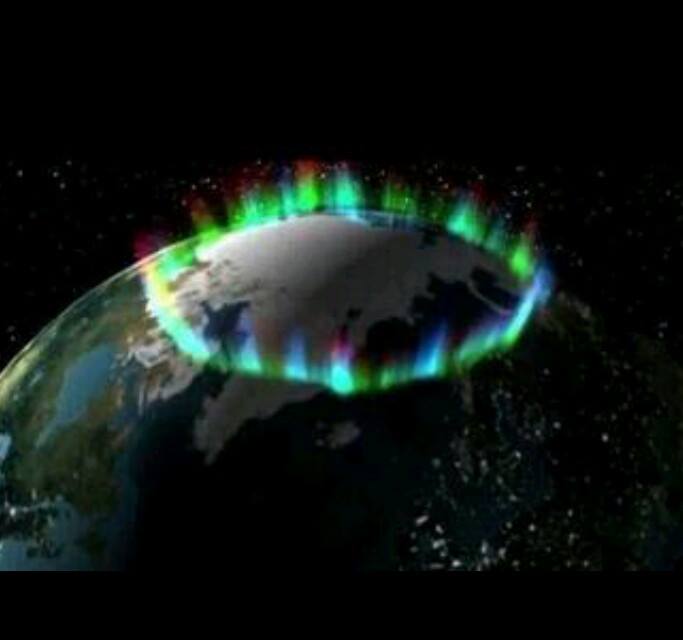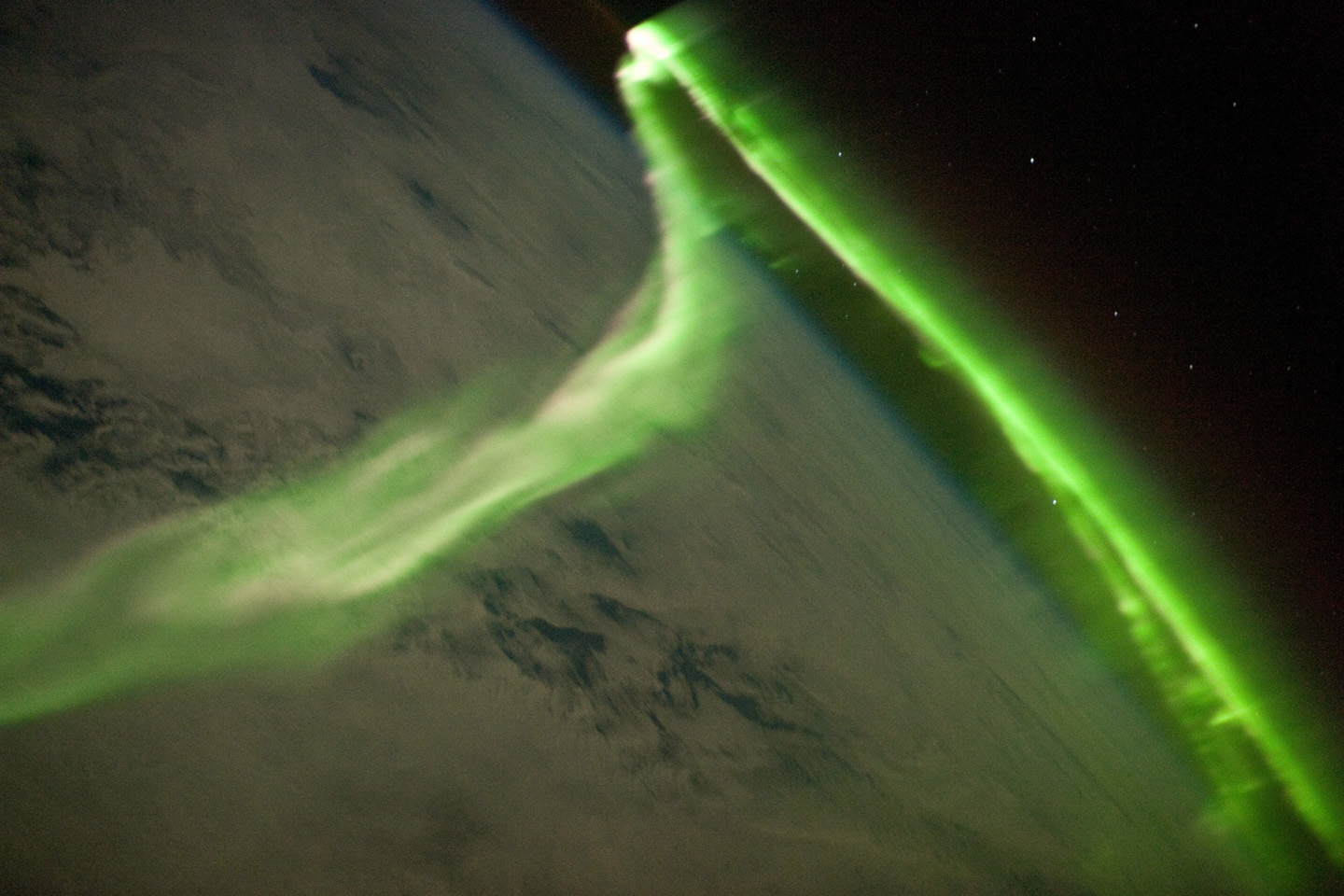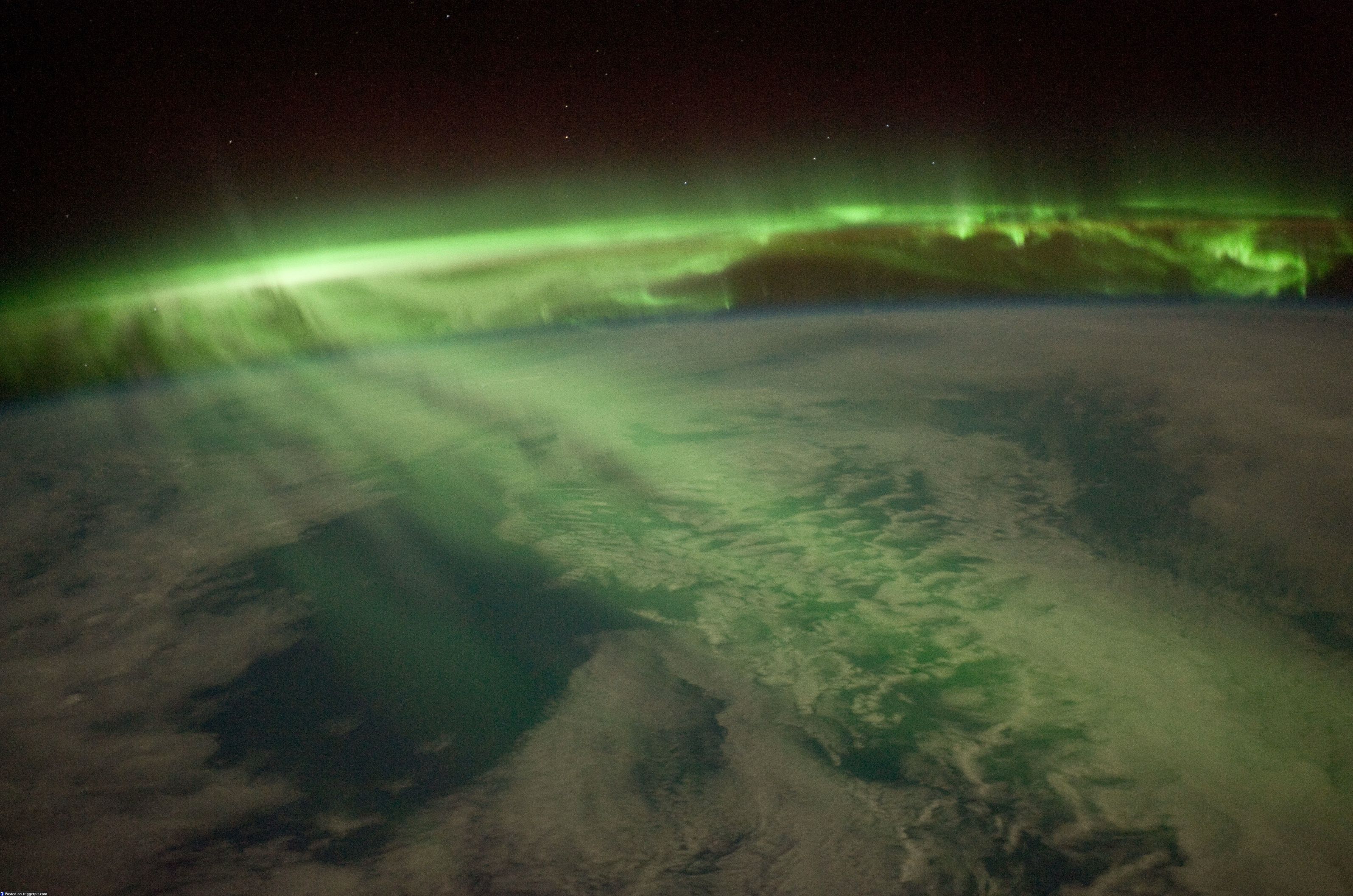It looks like you're using an Ad Blocker.
Please white-list or disable AboveTopSecret.com in your ad-blocking tool.
Thank you.
Some features of ATS will be disabled while you continue to use an ad-blocker.
share:
reply to post by championoftruth
You, you are just mistaken its not like that, its not fake cgi its just to make something real we cannot see like uv or ir into a color we can see.
False Color
You, you are just mistaken its not like that, its not fake cgi its just to make something real we cannot see like uv or ir into a color we can see.
False Color
championoftruth
wildespace
reply to post by championoftruth
Do you have large infrared and ultraviolet telescopes? Do you have a range of narrowband filters and the experience in astrophotography?
Many amateur astronomers took amazing images that rival those of NASA's.
The point being those photos are not what you would see if you had not done post production cgi work afterwards.
When you take photos of your family or kids do you then use cgi/photoshop to make them look better then they actually are in reality?
Do you use uv/ir filters when you take family or your kids pictures?
When you look at your kids in the morning do you look at their cgi enhanced photos or do you actually look at your kids direct?
Looks like we have another image expert on here that doesn't have a clue about the subject, do you take pictures of the family with a light source that is 8,933,750,000 miles away, if you take a picture of your family outdoors your light source is the Sun approx 93 million miles away at Saturn the distance is shown above.
If the light level on Earth from the Sun was given the value of 1 at Saturn what do you think it would be I will save you the trouble of finding out it's about 1/100th.
False colours are used to show things contained in the atmosphere.
Here is a picture of a persons face in UV here are the reasons it was done.
The researchers studied the assumption that actual signs of susceptibility to melanoma cancer -- things like freckles, red hair, blue eyes, and/or pale skin -- would point to skin markings of a particular severity seen via UV photography.
The trouble on here is we have to many people here making comments on subjects they don't understand but worse still DON'T make an effort to.
reply to post by championoftruth
There are plenty images of space taken in visible light, without any CGI as you call it. Humans will never see this with their own eyes anyway, because our eyes don't see colour in dim light, and don't work that well in dim light anyway.
So there's no point in calling all those images "fake". They show us what's there, at various wavelengths. The resulting images have scientific value and look great, so what's there to complain about? Get your own telescope and astroimaging equipment, and see if you can do better.
There are plenty images of space taken in visible light, without any CGI as you call it. Humans will never see this with their own eyes anyway, because our eyes don't see colour in dim light, and don't work that well in dim light anyway.
So there's no point in calling all those images "fake". They show us what's there, at various wavelengths. The resulting images have scientific value and look great, so what's there to complain about? Get your own telescope and astroimaging equipment, and see if you can do better.
wildespace
reply to post by championoftruth
Do you have large infrared and ultraviolet telescopes? Do you have a range of narrowband filters and the experience in astrophotography?
Many amateur astronomers took amazing images that rival those of NASA's.
I am afraid you are involved in a self contradiction there.First you say you need a billion dollars then in the next line you say amateurs images rivals NASA's.
wildespace
reply to post by championoftruth
There are plenty images of space taken in visible light, without any CGI as you call it. Humans will never see this with their own eyes anyway, because our eyes don't see colour in dim light, and don't work that well in dim light anyway.
So there's no point in calling all those images "fake". They show us what's there, at various wavelengths. The resulting images have scientific value and look great, so what's there to complain about? Get your own telescope and astroimaging equipment, and see if you can do better.
I am afraid you are missing the point.As champion of truth I am compelled to point out those photos you are so in awe of are no more real then the airbrushed pictures of semi clad models in glossy magazines.
championoftruth
wildespace
reply to post by championoftruth
There are plenty images of space taken in visible light, without any CGI as you call it. Humans will never see this with their own eyes anyway, because our eyes don't see colour in dim light, and don't work that well in dim light anyway.
So there's no point in calling all those images "fake". They show us what's there, at various wavelengths. The resulting images have scientific value and look great, so what's there to complain about? Get your own telescope and astroimaging equipment, and see if you can do better.
I am afraid you are missing the point.As champion of truth I am compelled to point out those photos you are so in awe of are no more real then the airbrushed pictures of semi clad models in glossy magazines.
I'm afraid YOU are missing the point...
The photos may have been "doctored", but it is to help us see what is out there that we normally can't see, i.e., highlighted.
Therefore... these pictures are REAL... taken of real orbs and heavenly bodies in space.
Understand?
championoftruth
wildespace
reply to post by championoftruth
Do you have large infrared and ultraviolet telescopes? Do you have a range of narrowband filters and the experience in astrophotography?
Many amateur astronomers took amazing images that rival those of NASA's.
I am afraid you are involved in a self contradiction there.First you say you need a billion dollars then in the next line you say amateurs images rivals NASA's.
Well you do need billions of dollars to build and launch a probe with cameras to Saturn as for your other comments
Look HERE you will see pictures that 10 years ago would have to be done by professionals.
Or this the best Milky Way taken by an amatuer see how far you can zoom in on that.
championoftruthI am afraid you are missing the point. As champion of truth I am compelled to point out those photos you are so in awe of are no more real then the airbrushed pictures of semi clad models in glossy magazines.
Since you are intent on using images of people as an example, what about CAT scan images? A CAT scan uses a computer that takes data from several X-ray images of structures inside a human's or animal's body and converts them into pictures or even a 3D model. What about electron microscope images of blood cells, viruses, and other things too small to see with the naked eye or even an optical microscope? All these examples produce "fake" images, but the subject is real, and the images give us valuable information and often look amazing.
To champion the truth, you first need to learn it.
As for equipment costing billions, it depends on what you want to achieve. You don't need billions to take great-looking images of space from Earth, but you do need billions (or millions) to go to Saturn, or Mars, or Jupiter, and study them upclose.
It seems your argument stems from ignorance. "I can't see anything like that through my telescope, so this means that all those pictures are CGI."
You all liked Saturn's auroras. What do you think about Earth's auroras?


sled735
You all liked Saturn's auroras. What do you think about Earth's auroras?
Cool, Sled! That is a beautiful picture of Earth and the Auroras.
Thank you for posting it.
wmd_2008
championoftruth
wildespace
reply to post by championoftruth
Do you have large infrared and ultraviolet telescopes? Do you have a range of narrowband filters and the experience in astrophotography?
Many amateur astronomers took amazing images that rival those of NASA's.
I am afraid you are involved in a self contradiction there.First you say you need a billion dollars then in the next line you say amateurs images rivals NASA's.
Well you do need billions of dollars to build and launch a probe with cameras to Saturn as for your other comments
Look HERE you will see pictures that 10 years ago would have to be done by professionals.
Or this the best Milky Way taken by an amatuer see how far you can zoom in on that.
the milky way photos looks fishy.as i zoomed in i saw WRITING in it nick risinger or something similar.
this proves it is not a original photo.
i mean we are supposed to be a part of the milky way and this genius has managed to take a photo of the whole galaxy as if he was outside it.where did he park his spaceship?
also it seems to very high resolution which again makes it fishy.how can you take such a high resolution photo and not have obstructions like birds and insects and random debris in front of it due to the long exposure needed for it?
also the atmosphere shimmers so his pohoto should be blurry but as you zoom in does not pixalate at all.
very suspicious.
very fishy.
edit on 17-3-2014 by championoftruth because: (no reason given)
reply to post by sled735
Very nice thread Sled, keep threads like this coming!
You probably the know the famous saying "Reality is stranger than fiction".
Very nice thread Sled, keep threads like this coming!
You probably the know the famous saying "Reality is stranger than fiction".
sled735
You all liked Saturn's auroras. What do you think about Earth's auroras?
I'm afraid that this time is is pure CGI aka an artist's impression. But there are real photos and videos of aurora from space, and they are very cool!


[double post]
edit on 17-3-2014 by wildespace because: (no reason given)
wildespace
reply to post by championoftruth
It's a mosaic of thousands of individual images. www.foxnews.com...
The view is from within the milky Way; that's how we see it in the night sky. The Solar System is located closer to the edge of our galaxy, so we get a good view of the galactic centre.
The full zoom doesn't go in that deep; at full zoom you could still fit about six or seven full moons vertically end to end.
Again, a little research goes a long way, especially if you set out to champion the truth.
edit on 17-3-2014 by wildespace because: (no reason
given)
championoftruth
the milky way photos looks fishy.as i zoomed in i saw WRITING in it nick risinger or something similar.
this proves it is not a original photo.
i mean we are supposed to be a part of the milky way and this genius has managed to take a photo of the whole galaxy as if he was outside it.where did he park his spaceship?
also it seems to very high resolution which again makes it fishy.how can you take such a high resolution photo and not have obstructions like birds and insects and random debris in front of it due to the long exposure needed for it?
also the atmosphere shimmers so his pohoto should be blurry but as you zoom in does not pixalate at all.
very suspicious.
very fishy.
No you are just being very lazy, Google is you friend YOU saw his name but didn't bother to look further here is a quote from his blog.
I’m at 6,200 feet in the Nevada desert capturing the first images of what will ultimately become a 37,440-exposure, 5,000-megapixel photograph of the entire night sky.
Here is a picture of him and his Camera Rig
The large letters on each camera position show the wavelengths they took pictures in.
More info here if you can be bothered to make the effort of looking.
Oh and you answered your own question about obstructions although you did not realise it LONG EXPOSURE!!!
edit on 17-3-2014 by wmd_2008
because: (no reason given)
reply to post by wildespace
Ahhh... Sweet!! Yeah, I came across that one on Face Book. LOL It had nothing to do with the group in my OP.
Thanks for your pictures. They look much better.
ETA: AWESOME video!! Thanks!
Ahhh... Sweet!! Yeah, I came across that one on Face Book. LOL It had nothing to do with the group in my OP.
Thanks for your pictures. They look much better.
ETA: AWESOME video!! Thanks!
edit on 3/17/2014 by sled735 because: add comment
new topics
-
Little Johnny and Larry should team up
General Chit Chat: 5 hours ago -
Will Us use alien technology to fight in ww3?
World War Three: 5 hours ago -
posted in wrong forum
Aliens and UFOs: 6 hours ago
top topics
-
Elon Says It’s ‘Likely’ He Buys Tanking MSNBC
Political Ideology: 14 hours ago, 16 flags -
Jaguar Rebrand Video Causes "WTF?" Moment - Seriously Weird
Automotive Discussion: 17 hours ago, 15 flags -
Montelukast affects brain, caused 5 year old to attempt suicide
Medical Issues & Conspiracies: 15 hours ago, 15 flags -
Shane Gillis commercial
Jokes, Puns, & Pranks: 12 hours ago, 4 flags -
Little Johnny and Larry should team up
General Chit Chat: 5 hours ago, 4 flags -
Let's start a conspiracy
General Conspiracies: 17 hours ago, 1 flags -
posted in wrong forum
Aliens and UFOs: 6 hours ago, 0 flags -
Will Us use alien technology to fight in ww3?
World War Three: 5 hours ago, 0 flags
active topics
-
Elon Says It’s ‘Likely’ He Buys Tanking MSNBC
Political Ideology • 74 • : andy06shake -
Montelukast affects brain, caused 5 year old to attempt suicide
Medical Issues & Conspiracies • 10 • : DeadlyStaringFrog -
Jaguar Rebrand Video Causes "WTF?" Moment - Seriously Weird
Automotive Discussion • 21 • : Athetos -
Well we know Putins ICBMs won't fail in their silos
World War Three • 176 • : andy06shake -
Will Us use alien technology to fight in ww3?
World War Three • 3 • : Athetos -
Biden's "Reckless" Decision To Escalate Russia-Ukraine War
World War Three • 122 • : PrivateAngel -
Well, here we go red lines crossed Biden gives the go ahead to use long range missiles
World War Three • 329 • : Imhere -
International Criminal Court Issues Arrest Warrant For Netanyahu
Mainstream News • 44 • : JJproductions -
Why isn't Psychiatry involved?
Social Issues and Civil Unrest • 12 • : tamusan -
What Joe Rogan said Vs The View
Dissecting Disinformation • 22 • : TheMisguidedAngel
